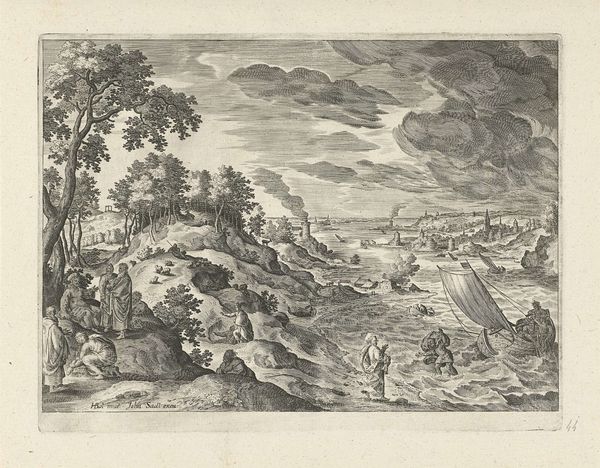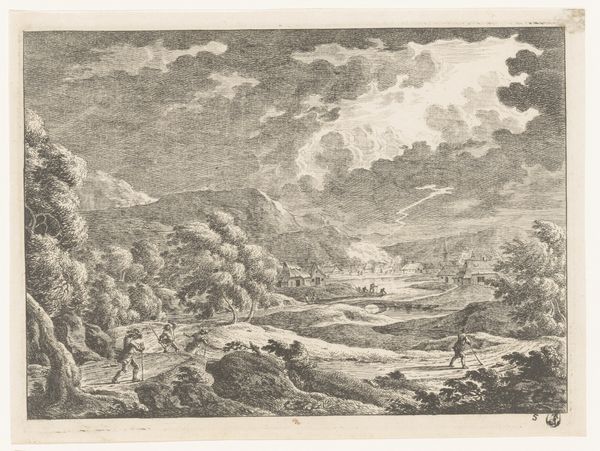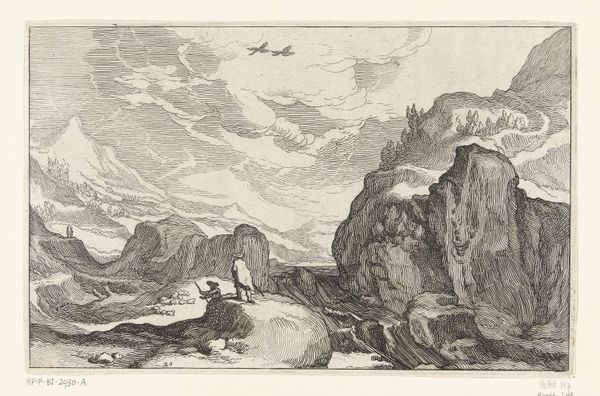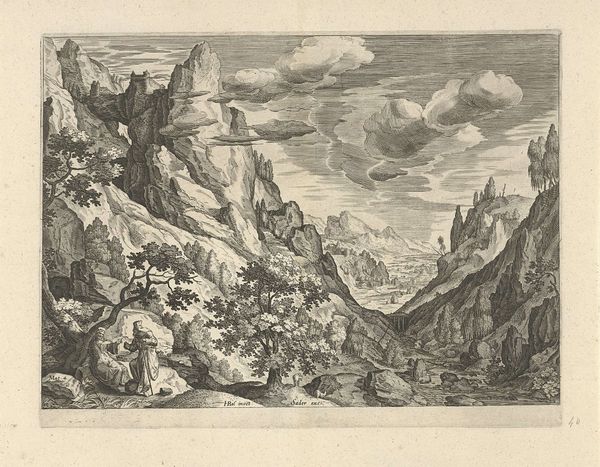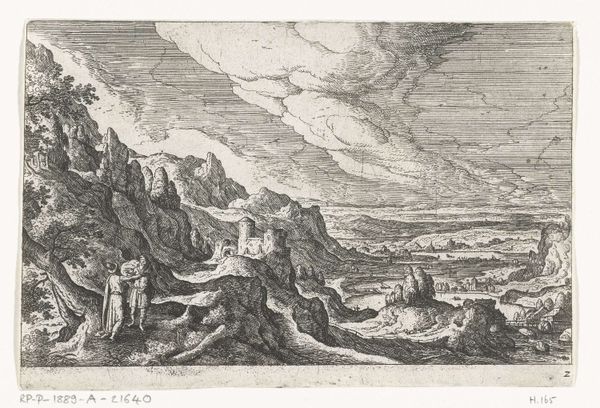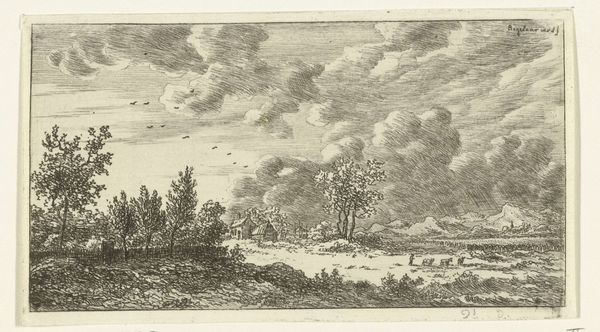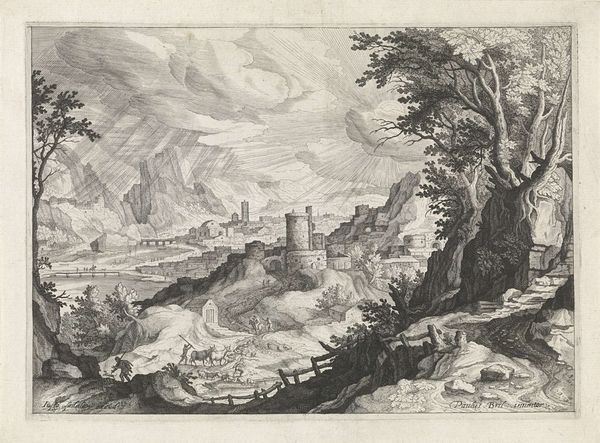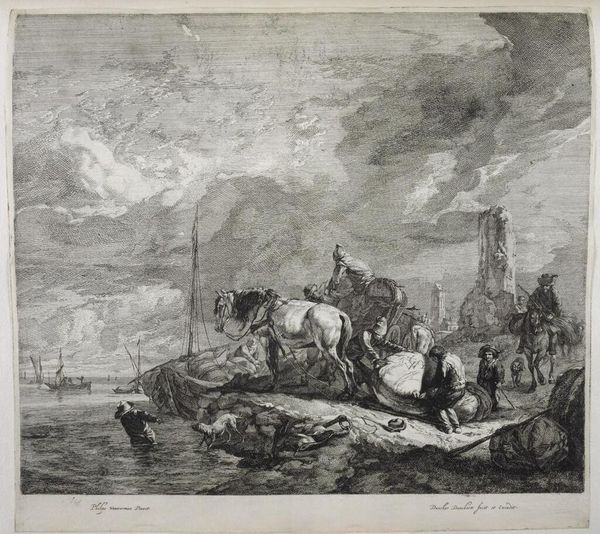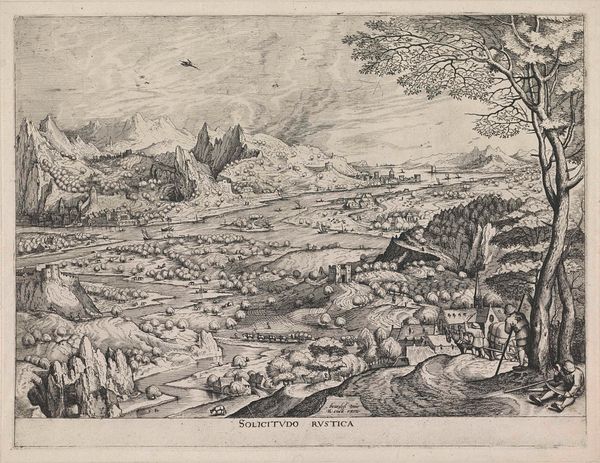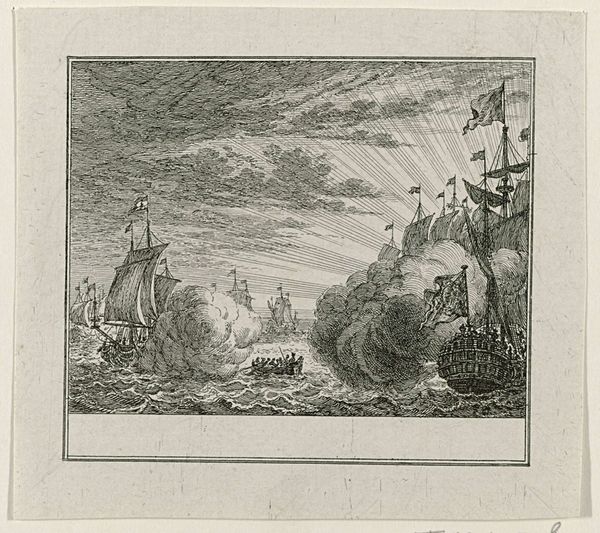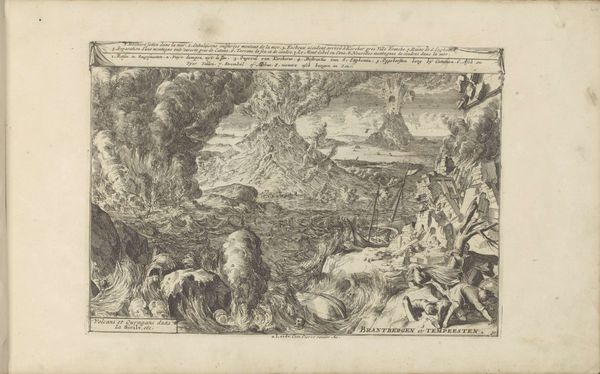
print, engraving
#
baroque
# print
#
pencil sketch
#
landscape
#
figuration
#
pencil drawing
#
pen-ink sketch
#
line
#
cityscape
#
history-painting
#
engraving
#
realism
Dimensions: height 302 mm, width 418 mm
Copyright: Rijks Museum: Open Domain
Curator: What strikes me immediately about this print, Schipbreuk, dating from somewhere between 1600 and 1700 and held at the Rijksmuseum, is its dramatic depiction of chaos and struggle. The sea seems alive with churning water and the ships are tossed about like toys. Editor: Indeed, the visual drama is immediately captivating. I am curious though, what were the common printmaking techniques of that era and how might they have shaped the image we're seeing? The clear linearity is particularly intriguing. Curator: The print medium during this period, especially engravings like this, relied heavily on skilled handwork, and the use of burins to carve lines into metal plates. Each line is a deliberate choice, controlling the visual texture and tonal range, therefore contributing to the emotional weight of the imagery. The labor is evident, line by painstaking line. Editor: And within those carefully etched lines, consider the potent symbols embedded here. The shipwreck itself is such an enduring allegory for human fragility against the force of nature or fate, isn't it? We see this theme throughout art history. Curator: Absolutely, shipwrecks held a significant cultural weight at this time. The Dutch Republic's maritime power was inextricably linked to its economy and its collective identity. These wrecks could function as warnings against hubris, or perhaps memorials of individual or collective trauma, of lives lost at sea and materials gone to the depths. The printing of such a graphic scene allowed the event to spread beyond word of mouth, furthering its message of warning or solidarity. Editor: I wonder if the rising mountain on the horizon also operates as a symbol. Its implacable form set against the tempestuous sea? Curator: Perhaps as a stoic reminder of permanence against fleeting disasters? There’s also the implicit tension between nature's destructive potential and the human impulse to build and navigate it. In the rocky cliffs to the right, we see the hints of habitations. They mirror humanity’s attempts at constructing order in response to an unpredictable, almost adversarial, landscape. Editor: Thank you. I find that recognizing these thematic layers really enriches the artwork. The stark drama feels both timeless and yet specific to its historical context. Curator: And considering the materials involved—paper, ink, metal—as evidence of labour, technique, and cultural context offers another, equally valuable lens.
Comments
No comments
Be the first to comment and join the conversation on the ultimate creative platform.
